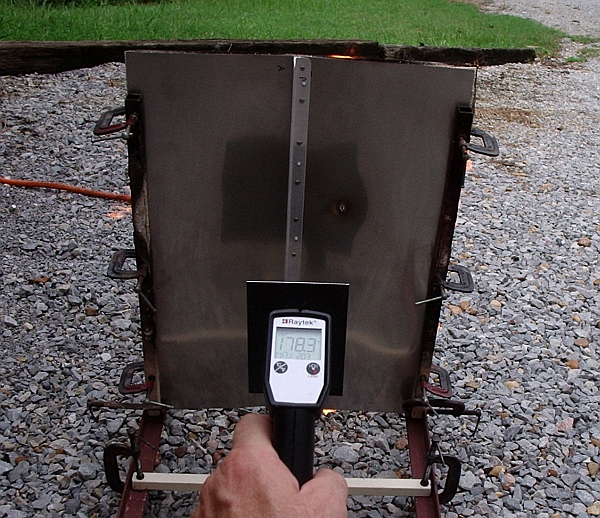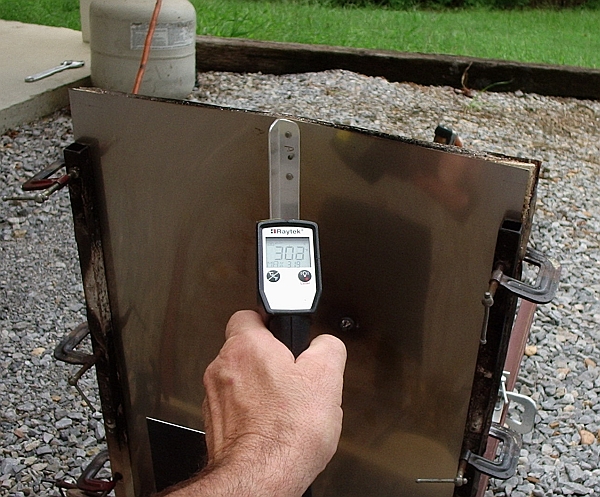Orcotek, a high quality FAR 25.853 cabin wall insulation. Fiberglass batt with a plastic vapor barrier. Really good stuff to fill the spaces behind wall and door panels. Not so good when placed in contact with a hot firewall.
Soundex Firewall Mat, a black rubber foam with an aluminum foil face, and claimed to meet FAR 25.853. Night photo, so you don't get the see the boiling smoke. How would you like to be trapped in the cabin with this?
A far more suitable material, ordinary high temp ceramic batting, with no sizing or binder. The burner is running on the front side of the stainless firewall panel, exactly like in the previous photos. Well, not
exactly like the previous photos....in this case the burner has been running for several minutes. Look close...the stainless sheet is glowing, but my hand is perfectly comfortable. No smoke, no flame. If you
insist on placing insulation on the cabin side of your firewall, fold this into plain aluminum foil envelopes to contain airborne fiber, a lung cancer risk. Ordinary HD Reynolds Wrap from the grocery store will work fine. Use a mechanical attachment (no glue please).
Far, far better to insulate the
engine side and protect the structure as well as your feet. This is 3 minutes into a burner run, an eternity if you have an engine compartment fire. The black heat target (simulating the soles of your shoes) is at 178F. The aluminum firewall angle and rivets are about 300F, meaning they continue to be structurally viable. You may be crying, but you're still flying. No fire extinguisher discharge required. Oh, and you actually had time to turn off the fuel tap.






